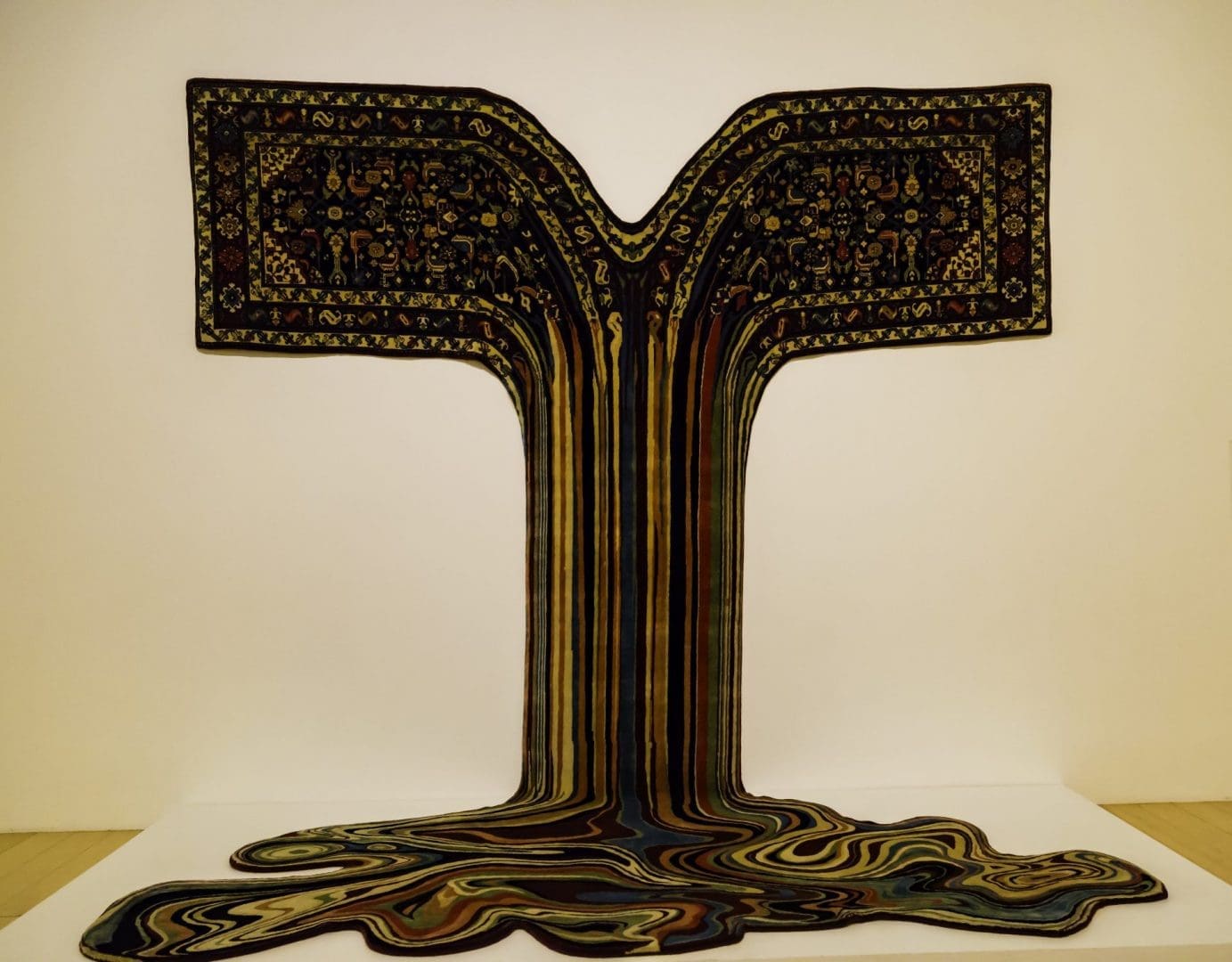An Art-Form From Planet Xanyurdu
Azerbaijan is not a country I have thought of often I must admit. A mysterious nation lurking in the Transcaucasia and boasting cities with alien planet-sounding names like; Zaqatala, Sumqayit and Xanyurdu, Azerbaijan was cloaked in the obscurity of the Soviet Union for most of the 20th century. Then, in the summer of ‘92 it emerged blinking into the bright sunlight of global attention as an independent nation and promptly vanished from my zone of interest again. And why not? They’re not at least a Tier Two rugby nation, they suck at football and are even more feeble than us at tennis – although they do have a stop on the Formula One Grand Prix circuit so they must have Bernie’s bank account details at least.
And yet, I am having to completely re-evaluate my lackadaisical attitude toward Azerbaijanis simply because of one dude – an artist called Faig Ahmed. This man has taken something as – literally – pedestrian as a rug and turned it into the kind of psychedelic artworks you could easily imagine finding in Jimi Hendrix or George Harrison’s London flats circa 1967.

Faig Ahmed’s “Osho” displayed at LACMA
I am often very close to rugs as my missis has always had a thing for Middle Eastern carpets so we have about a dozen strewn throughout the house always getting caught up with computer chair legs, vacuum cleaner wheels and stumbling drunken feet. Yet all of our carpets, and in fact every rug I have ever seen before, have been very traditional with the same type of patterns that have been around in Islamic art for hundreds of years. The very same style of interlinked patterns that have heavily influenced Western artists, most notably the legendary Dutch artist MC Escher, who was so blown away by the Moorish tiling at Alhambra in Southern Spain he based his entire career on it.
Which makes Mr Ahmed’s artworks appear even more daring considering the galactic level of conservatism he is up against. In comparison, Messieurs Hendrix and Harrison were only fooling with an art form 10-15 years old, and definitely not intrinsically linked with worship. But, being Azerbaijani, Mr Ahmed is possibly allowed more license than most as carpet-weaving is regarded as a family tradition in the country and the region itself – including Armenia and northern Iran – is regarded as the home of rugmaking. He also understands the importance of patterns in both his work and in the traditional pieces; ‘Patterns and ornaments can be found in all cultures, sometimes similar, sometimes very different. I consider them words and phrases that can be read and translated to a language we understand.’
Where the freakiness comes from in Mr Ahmed’s work, he admits as; ‘travelling in my subconsciousness, different practices and meditations’ is via Sufism. This is a kind of inward – or mystical – form of Islam where the Sufi aims to reach a state of ecstasy in communing with Allah. An example of Sufism in action are the Whirling Dervishes, who spin continuously on the spot as a form of physical meditation to reach a nirvana-like state. A place where the physical rules of time and space no longer apply – and Mr Ahmed has taken us there. You know, that old saying is true – great ideas come out of nowhere!

